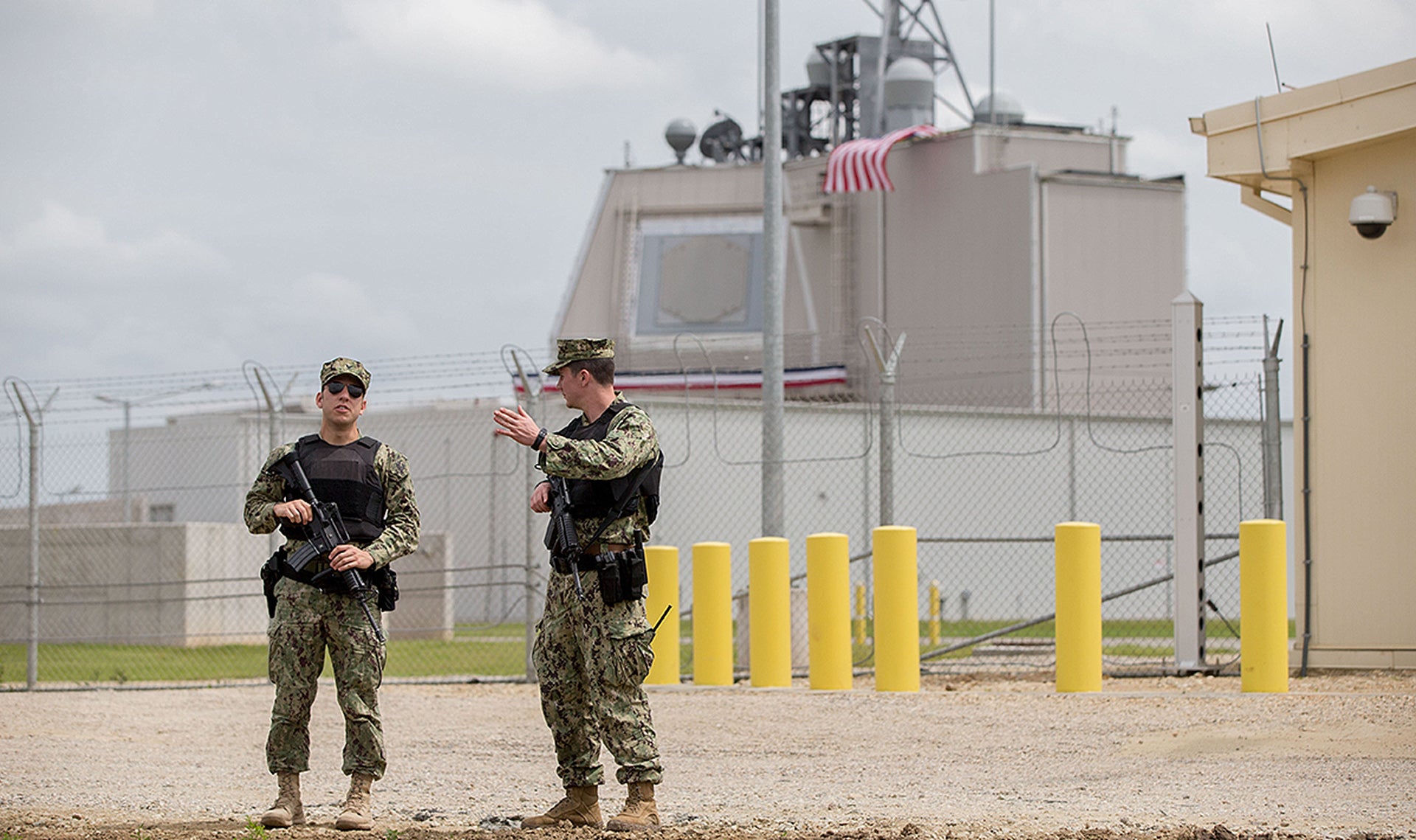Only a couple days after we broke down America’s risky nuclear weapons policy in Turkey, European news outlet EurActiv reports that the U.S. has redeployed at least a sizable portion of its arsenal of B61 nuclear bombs from Incirlik Air Base in Turkey to Deveselu Air Base in Romania.
The Romanian base is the home of America’s highly sensitive Aegis Ashore anti-ballistic missile facility, which includes a magazine of advanced SM-3 Block 2B missile interceptors. Closed in 2003, the base fell into an increasingly dilapidated state for nearly a decade before the U.S. selected it for its missile defense initiative in 2011. Beginning in late 2013, the facility was rapidly overhauled and adapted for the anti-ballistic missile mission. The Aegis system was certified operational just last May, and while it is designed to defend against low-volume launches of medium-range ballistic missiles from rogue states, Russia still detests its existence.
Having sought verification for the claims made by its sources, EurActiv writes:
NATO sent EurActiv a diplomatically worded comment which implies that allies must make sure that US nuclear weapons deployed in Europe remain “safe”.
“On your question, please check the Communiqué of the NATO Warsaw Summit (published on 9 July 2016), paragraph 53: “NATO’s nuclear deterrence posture also relies, in part, on United States’ nuclear weapons forward-deployed in Europe and on capabilities and infrastructure provided by Allies concerned. These Allies will ensure that all components of NATO’s nuclear deterrent remain safe, secure, and effective,” a NATO spokesperson wrote to EurActiv.”
Which certainly sounds like a fuzzy answer to a question that could be easily denied, although murky official responses as to inquiries regarding U.S. nuclear weapons in Europe have been the norm since the bombs first arrived there more than half a century ago.
It is against NATO’s own policy to forward-deploy nuclear weapons to the territory of “new” eastern European NATO members such as Romania as defined by The Founding Act of 1997, which states:
“The member States of NATO reiterate that they have no intention, no plan and no reason to deploy nuclear weapons on the territory of new members, nor any need to change any aspect of NATO’s nuclear posture or nuclear policy – and do not foresee any future need to do so. This subsumes the fact that NATO has decided that it has no intention, no plan, and no reason to establish nuclear weapon storage sites on the territory of those members, whether through the construction of new nuclear storage facilities or the adaptation of old nuclear storage facilities. Nuclear storage sites are understood to be facilities specifically designed for the stationing of nuclear weapons, and include all types of hardened above or below ground facilities (storage bunkers or vaults) designed for storing nuclear weapons.”


Unlike NATO, Bucharest is flatly denying the report.
Beyond the unprecedented political and policy complications that would come with establishing a U.S. nuclear presence in Romania—including the impact it would have on already-shaky Russian-Romanian relations—there would be physical issues with transporting, storing, and deploying the weapons from Deveselu Air Base.
First off, Deveselu Air Base is effectively no longer an air base at all. Its 8,500-foot runway was eliminated as part of the Aegis Ashore facility construction plan and the surrounding infrastructure that was built up around it. (See satellite imagery of the facility here.)
This means the weapons would have to flown into another airport located dozens or hundreds of miles away, then moved by road to Deveselu. Such a complicated logistical scenario would represent a massive set of security issues, both at the non-U.S.-controlled airfield and along the route during ground transport. Helicopters such as the CH-47 or CH-53 could be used, but doing so would require a deployment to Romania. In addition, using vertical-lift assets for this type of mission would represent a host of security and health contingencies that would have to be addressed at length.

And because there is no runway at Deveselu, how would said tactical nuclear bombs even be put to use during a time of war? They would have to transferred to another facility equipped with a long runway, where they would meet tactical aircraft that would have to deploy there on sudden notice (likely days, not hours), along with personnel and equipment that would enable a sortie to be executed. And once at that airport or air base, where would the weapons be safely stored?
Even the nuclear weapons stored at Incirlik Air Base in Turkey have questionable utility, as there are no aircraft assigned or consistently rotated through there with trained crews waiting for the doomsday klaxon to sound. But at least the capability could theoretically be provided on a relatively short notice. At Deceselu, even that would be impossible.

Then there is the question of how these nukes would be stored at Deveselu in the first place? The base lacks the WS3 vaults designed for this purpose, as it is only meant to be equipped with SM-3 hit-to-kill interceptors. So unless the base has a secret storage facility, it cannot contain thermonuclear weapons in a manner up to the needed standards of security.
So when you take all this into account, all the evidence seems to point to the conclusion that EurActiv’s report is likely false.
Contact the author Tyler@thedrive.com
